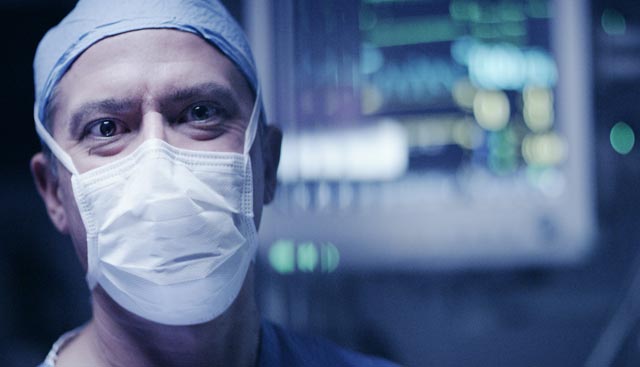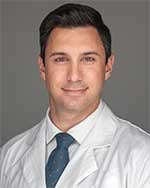Pioneering Advances in Upper Extremity Oncologic Reconstruction and Endoprosthetic Reverse Shoulder Technology
 The proximal humerus, vital for upper extremity function, is a common site for primary bone tumors and metastatic cancers. Alone or in conjunction with adjuvant therapies, resection surgery is the main therapeutic option, followed by a reconstructive phase to maintain function so the patient can reassume activities of daily living. While other reconstruction options such as allograft, partial prosthetic (hemiarthroplasty) and allograft-prosthetic reconstructions have been available for some time, on occasions they offer limited functionality and several disadvantages.
The proximal humerus, vital for upper extremity function, is a common site for primary bone tumors and metastatic cancers. Alone or in conjunction with adjuvant therapies, resection surgery is the main therapeutic option, followed by a reconstructive phase to maintain function so the patient can reassume activities of daily living. While other reconstruction options such as allograft, partial prosthetic (hemiarthroplasty) and allograft-prosthetic reconstructions have been available for some time, on occasions they offer limited functionality and several disadvantages.
Reverse shoulder technology is a new, promising solution that allows for improved shoulder function. At Moffitt, patients have access to a leading specialist in this surgical field and opportunities to participate in collaborative studies to continue driving toward improved outcomes for cancer patients requiring complex shoulder reconstructions.
Need for Advanced Reconstruction
The proximal humerus is the fourth most common localization for primary bone tumors, the first most common between the bones of the upper limbs and the second most common for metastatic cancer to bone. When a resection, or removal, of the upper humerus or scapula is required, such as in instances of osteosarcomas and Ewing sarcomas, surgical oncologists face significant challenges for functional reconstruction, especially when the rotator cuff becomes compromised or must be removed to ensure safe margins.
While amputation is no longer an approach of choice after a massive resection, other standard reconstructive techniques have included:
- Osteoarticular allograft (donor graft) - Allows for biologic reconstruction and can include soft tissue attachments to promote bony and soft tissue integration. However, it carries high reported complication rates such as non-union, fracture, and hardware failure and faces a potential lack of availability of donor grafts.
- Endoprosthesis (metal prosthetics) - Allows for modularity based on patient-specific preoperative planning, an early return to function, lower complications and good long-term survivability, but can present an increased risk for dislocation, infection, or proximal migration, instability and dislocations.
- Allograft prosthetic composite (combined use of donor graft and prosthesis) - Allows for anatomic restoration, prosthesis modularity and convertibility, immediate stability, early range of motion and good long-term survivability and functional outcomes. However, it can also create allograft-related complications, including osteolysis, hardware failure, non-union, fracture, allograft resorption, aseptic loosening and proximal migration. Depending on geographic location, tissue bank availability may also be limited.
The current goals of resection and reconstruction are to remove the tumor with wide margins, spare the limb, and restore the length and shape of the arm for shoulder mobility to allow patients the capability to resume daily living with a low risk of complications.
Removing musculature, such as the rotator cuff, is often necessary to achieve safe margins. Patients want to return to their normal lives but may feel insecure about the potential outcomes after resection, especially given these risks. Many patients have a decreased range of motion postoperatively, allowing them to perform tasks where shoulder function is unnecessary or minimally required, such as typing or eating. They can sometimes perform tasks like brushing their hair or placing something on a shoulder-height shelf. Still, activities that require forward shoulder flexion, such as reaching overhead, may not be possible on the side of the affected shoulder.
This drives a great need for advanced reconstruction options that offer more promising patient outcomes, allowing them to return to activities of daily life.
Introducing Reverse Shoulder Technology
Reverse shoulder technology, also known as endoprosthetic or massive reverse total shoulder arthroplasty (RTSA), is a promising option for improved shoulder function, even without a functional rotator cuff. It’s a reliable treatment for patients who lost their rotator cuff in resection surgery but maintained axillary nerve and deltoid insertion, leading to better functional results than a partial shoulder replacement. By using modular metal shoulder components, or when used in combination with an allograft, the missing bone can be reconstructed for better patient outcomes. In certain circumstances, patient-specific instrumentation and custom implant reconstruction may be necessary to help optimize the reconstructive outcome for the patient.
RTSA surgical technology flips or reverses the articular components of the shoulder, the ball and socket joint, in order to bypass the need for a functional rotator cuff. As a result, this reconstruction option improves articular strength, stability, and range of motion while keeping the risks of dislocation or loosening low. It also provides better flexion and abduction, extending to over 90 degrees, allowing patients to resume more of their daily living capabilities.
Leading the Way in Upper Extremity Reconstruction at Moffitt Cancer Center
Moffitt is a national leader in employing this technology for cancer patients requiring complex shoulder reconstruction. Supported by comprehensive care and cutting-edge advancements, patients have access to transformative solutions when facing a need for advanced shoulder reconstruction.
 Moffitt’s sarcoma program specialists have experience performing this procedure, with one specialist, Dr. Alex Lazarides, standing out as a pioneer in developing novel techniques and therapeutics for the treatment of sarcomas. Dr. Lazarides can perform this sarcoma surgery at Moffitt’s newest hospital and surgical center, Moffitt McKinley.
Moffitt’s sarcoma program specialists have experience performing this procedure, with one specialist, Dr. Alex Lazarides, standing out as a pioneer in developing novel techniques and therapeutics for the treatment of sarcomas. Dr. Lazarides can perform this sarcoma surgery at Moffitt’s newest hospital and surgical center, Moffitt McKinley.
Moffitt is currently participating in multi-institutional collaborative studies to evaluate patient and implant outcomes and continue progressing toward improved outcomes. Another way Moffitt aims to optimize results includes specific preoperative planning and protocols that can maximize the effectiveness of each procedure, reduce perioperative and postoperative complications and better tailor care to individual needs.
With a steadfast commitment to innovation and patient-centered care, Moffitt continues to lead in this field, offering hope to patients facing the challenges of upper extremity oncologic reconstruction. As Moffitt continues to push the boundaries of cancer innovation, patients, their families and referring providers can trust Moffitt’s commitment to providing the best care possible.
If you’d like to refer a patient to Moffitt, complete our online form or contact a physician liaison for assistance. As part of our efforts to shorten referral times as much as possible, online referrals are typically responded to within 24 - 48 hours.
